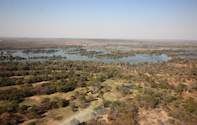
The History of EUS
In 2009, a deadly disease devastated fish stocks in Africa's Zambezi River basin by threatening the livelihoods and access to food of millions of rural people, the United Nations' Food and Agriculture Organization (FAO) reported.
The disease, called Epizootic Ulcerative Syndrome (EUS) or red spot disease (RSD), is caused by a fungus forming deep lesions on fish which form ulcers, and results in high mortality rates. Although fish infected with EUS do not normally pose a threat to humans, the lacerations render them unmarketable, threatening some 25 million people dependent on agriculture or fishing and fish farming in the Zambezi River basin with serious economic loss.
A study had taken place in 2011 to determine the reasons behind the outbreak of EUS in the Zambezi River System in the Western Province of Zambia. Throughout the study, a total of 4, 800 fish were inspected to explore the infection rate and distribution of the disease.
The disease had previously occurred in Japan, south-east Asia, Australia and the USA, but hadn't been present in Africa until 2007. The most affected country was Zambia, covering two-thirds of the basin's almost 1.4 million km² , with over 2,000 villages and some 7,000 people now at risk of hunger as fish is a major source of income in many rural districts and the cheapest source of protein, said FAO.
"If not properly contained, there is the risk of the disease spreading to other countries surrounding the Zambezi River as well as river systems in the region," said Rohana Subasinghe, FAO Senior Fishery Resources Officer.
Indications are that EUS, which was first confirmed in Africa in 2007, is spreading both upstream and downstream of the Zambezi and risks taking hold in other parts of Africa, FAO said in a news release.

